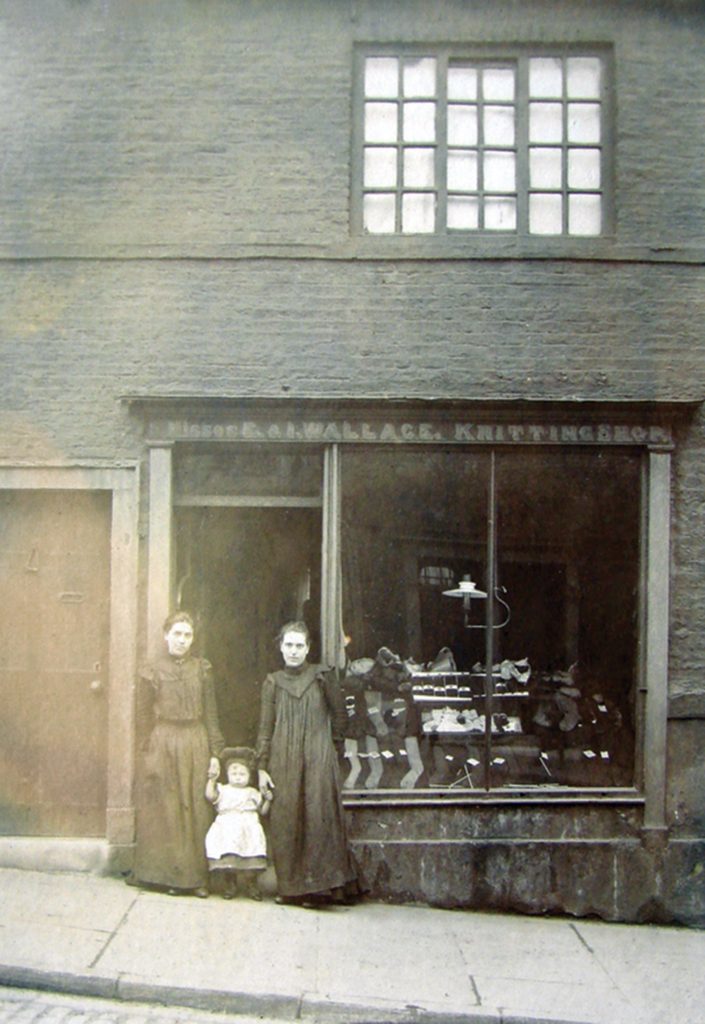Lost Durham by Michael Richardson
This collection in Lost Durham has been specially selected to complement my other volumes and is arranged in four specific sections: ‘Meet the People’, ‘The Built Environment’, ‘At Work’, and ‘Events and Occasions’.
There are so many unusual images in this volume that it is impossible for me to pick out a preference; however, I will mention a handful.

In the first section, ‘Meet the People’, the one portrait that stands out for me is that of Thomas Heaviside – my favourite photographer and Durham’s first professional ‘photographic artist’.
He is pictured in his whites with a friend, probably taken prior to a cricket match in the 1860s. He was born in Elvet in 1828, son of a schoolmaster. His occupation prior to 1860 was coach trimmer. Around 1861 he was listed as a photographic artist. Many of his photographs still survive and are reproduced in this volume. He was the grandfather of Michael Heaviside Durham Light Infantry, VC, who was born in Gilesgate.

In the second section, ‘The Built Environment’, the drawing of Kepier Mill was a great discovery as it was thought that no images existed of it before the fire of 1870. The close-up shot of the old rope bridge crossing the River Wear at Kepier Wood was another; this was taken by William Lambeth (father of Roy). The two early views of the construction of the viaduct (opened 1 April 1857) show the beginning of change to the city with the coming of the railway (although Gilesgate had opened in 1844 as Durham’s first passenger station).
This is the only known image showing the Kepier Mill intact prior to the fire of 24 September 1870, which destroyed it. The stone archway still survives. To the right of the picture is Kepier Gatehouse, built by Bishop Flambard around 1130. On the extreme right is the seventeenth-century banqueting house belonging to the Heath family, which later became an inn. Only the first-floor arcade survives.

The third section, ‘At Work’, shows a busy city full of a variety of business premises. There are the Wallace sisters, Elizabeth and Isabella, outside their stocking knitting shop at No. 75 Claypath; and over the road at No. 41 Claypath is the City Picture Frame Works, owned by Thomas Cranson – both taken early 1900s. The beautiful shop frontage and interior of the Home and Colonial Stores at No. 4 Silver Street was taken in the 1900s by another great local photographer, John Edis.
The final selection is ‘Events and Occasions’. I must say one special new discovery was the watercolour depicting the fire at the Salvin Cotton Mill in Church Street on 7th January 1804. This was captured by the renowned artist Paul Sandby RA (1731–1809), a founder of the Royal Academy. Lost events like the annual horse fair in Old Elvet, Lord George Sanger’s circus visit and the assize judges’ procession are covered. The Durham Miners’ Gala and the Regatta, which still continue to thrive, are also shown.

The mill stood to the left of St Oswald’s Church, behind what is now Anchorage Terrace. The building was built in 1796 and was six storeys high with 365 windows. It lasted only eight years, having been destroyed in the fire of 7 January 1804. Unfortunately, the Salvins hadn’t kept its insurance up to date and it was never rebuilt. Parts of its walls still survive and can be seen from the riverbank footpath.
The archive continues to grow and it always amazes me as to the quality of images still turning up, especially after being hidden away for years in attics, cupboards and suitcases. I am confident that you will have great interest while perusing these pages and reading about our rich social heritage.
Michael Richardson's book Lost Durham is available for purchase now.

